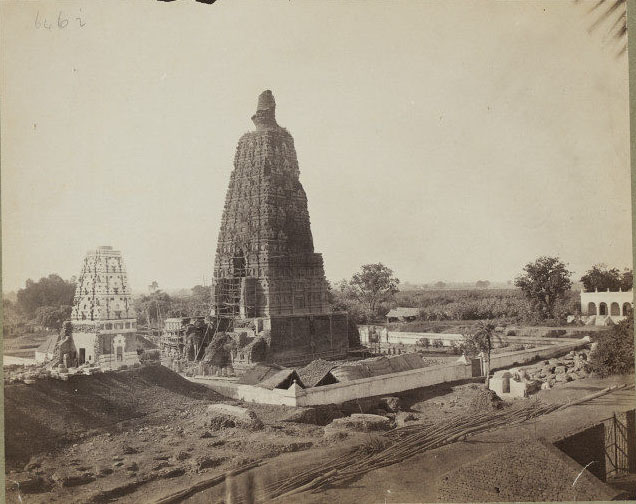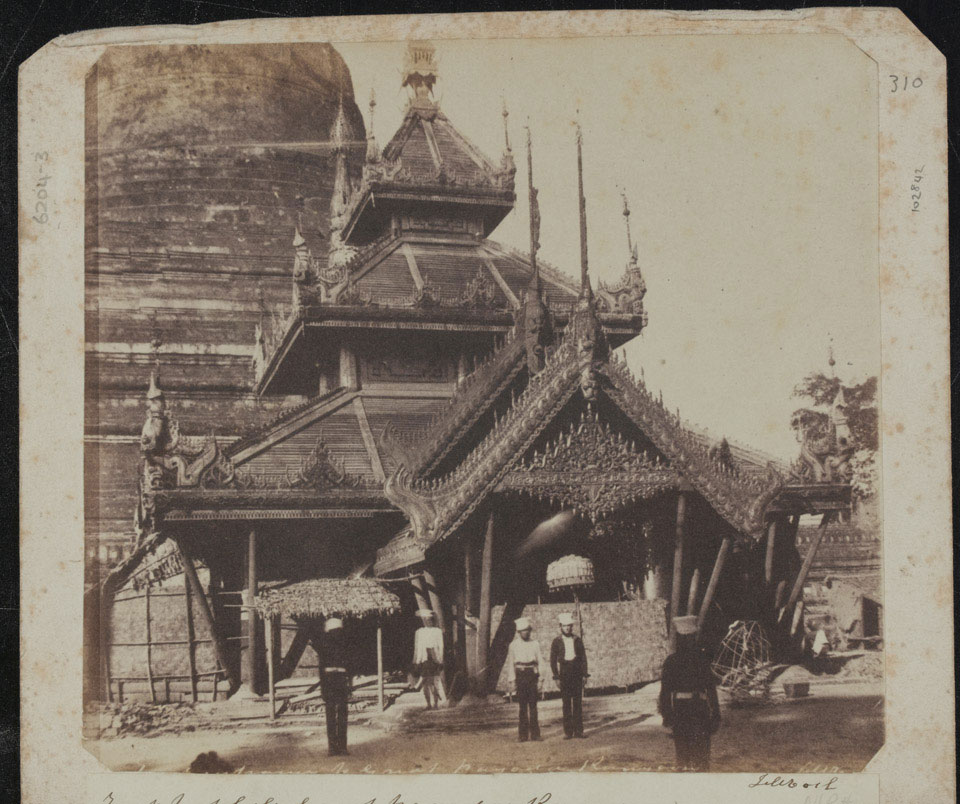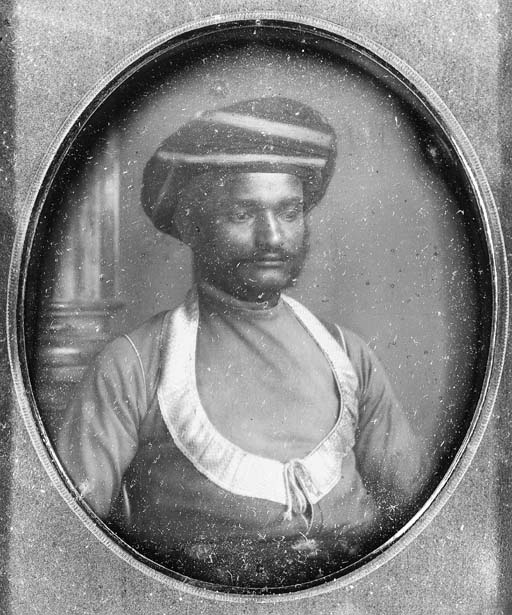Robert Gill (1804 – 1879) was a British military officer, antiquarian, painter and photographer in British India. He joined the 44th Madras Native Infantry as a cadet in 1824 and became Captain in 1840; finally, he was promoted to Major.

A skilled painter and draftsman, Gill was a member of The Royal Asiatic Society, and therefore, he was entrusted with the duty of making drawings of the rock-cut architectural and pictorial remains in the Caves of Ajanta. He spent thirty years measuring, mapping, cataloguing, photographing, and painting in the Ajanta caves. He had copied and painted about 30 of the principal frescoes on canvas at almost full-size by 1863 and these works were sent to London. Tragically, twenty-five of his paintings were destroyed in a fire at the Crystal Palace in London in 1866; the few unburnt paintings are now in the Victoria and Albert Museum, in London.
Gill had taken up photography in the mid-1850s and was a corresponding member of the Photographic Society of Bombay and from the early 1860s until his death he produced an important archaeological record of Ajanta and other sites. Two volumes of his photographs, The Rock-Cut Temples of India and One Hundred Stereoscopic Illustrations of Architecture and Natural History in India were published in 1864, with texts by the architectural historian James Fergusson.
Although his initial works were in Collodion, he was not convinced with the process. In one of his lectures to Photographic Society of Bombay, he iterated problems with the deterioration of Collodion, and suggests that it should be manufactured in Bombay rather than imported from England. He also experimented with Calotype in the later stage of his career.
Robert Gill’s most of the Ajanta work were stereoscopic views, a popular format that allowed the image to be placed into a hand-held viewer to create the illusion of a three-dimensional scene. The stereoscopic format may have offered the possibility of appearing to present more information within each scene as well. In the mid-1860s, stereoscopic views were extremely popular for illustrating scenes at tourist sites particularly in Europe and the United States. Less well known architectural sites like Ajanta had also been photographed in this way.

Stereoscopic views were first described in 1832 by English physicist Sir Charles Wheatstone and then stereoscopy was improved by Sir David Brewster in 1849. The production of the stereograph entailed making two images of the same subject, usually with a camera with two lenses placed 2.5 inches (6 cm) apart to simulate the position of the human eyes, and then mounting the positive prints side by side laterally on a stiff backing. Brewster devised a stereoscope through which the finished stereograph could be viewed; the stereoscope had two eyepieces through which the laterally mounted images, placed in a holder in front of the lenses, were viewed. The two images were brought together by the effort of the human brain to create an illusion of three-dimensionality.
In his introduction to Robert Gill’s “The Rock-Cut Temples of India and One Hundred Stereoscopic Illustrations of Architecture and Natural History in India” the architectural historian, James Fergusson commended on the Stereoscopes. He said, “they tell their own story for more clearly than any form of worlds that could be devised and even without the text they form by far the most perfect and satisfactory illustration of the ancient architecture of India which has yet been presented to the public”. Five years later he had changed his mind and said “Stereoscopes and those of less dimensions, though very beautiful are not suited for scientific purposes. It is hardly ever possible to make out the details of architecture in small photographs with sufficient distinctness to reason up them in a satisfactory manner”
Reference
https://www.wikiwand.com/en/Robert_Gill
https://wikivisually.com/wiki/Robert_Gill
https://www.britannica.com/technology/photography/Development-of-stereoscopic-photography
PHOTOGRAPHY IN VICTORIAN INDIA, RAY DESMOND, Journal of the Royal Society of Arts, Journal of the Royal Society of Arts, Vol. 134, No. 5353 (DECEMBER 1985), pp. 48-61 (14 pages)











Very interesting. You had 2 do a lot of research for this.
Nice explanation to know what’s real picture thank you all the best
Very informative and useful pages with lots of details.